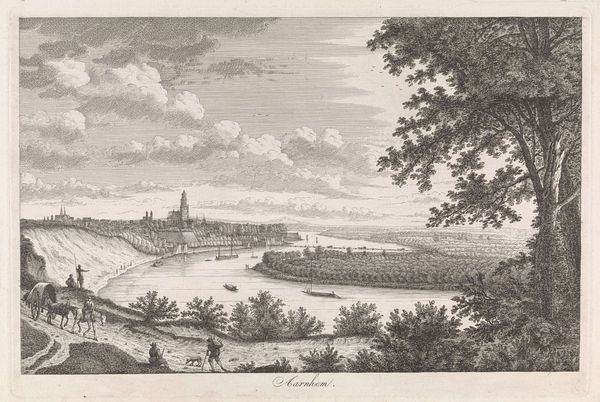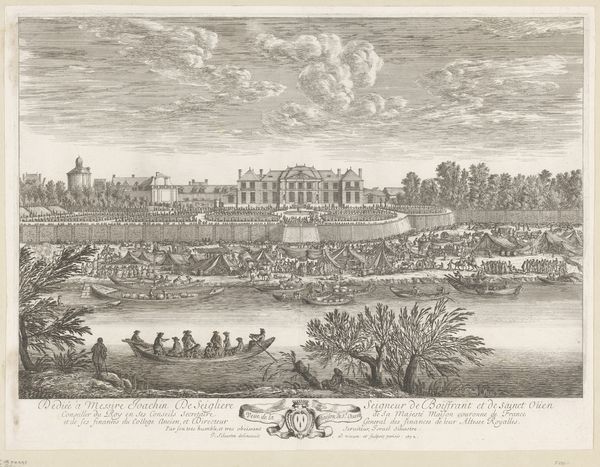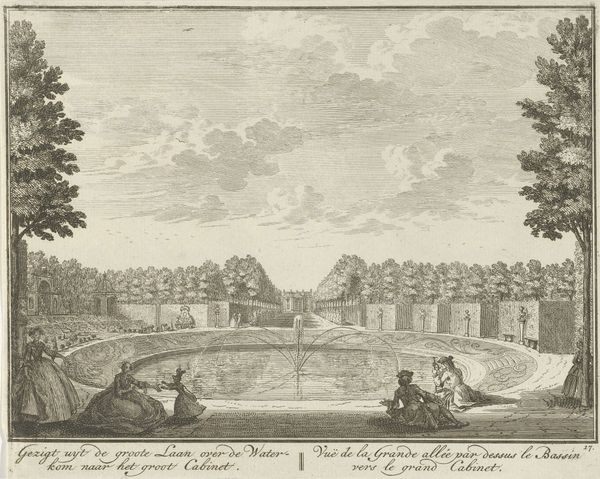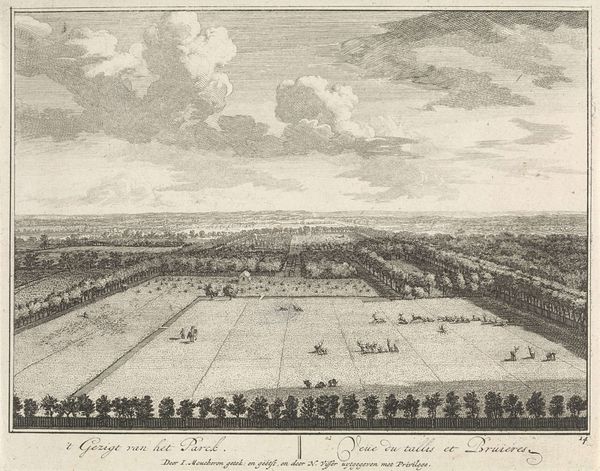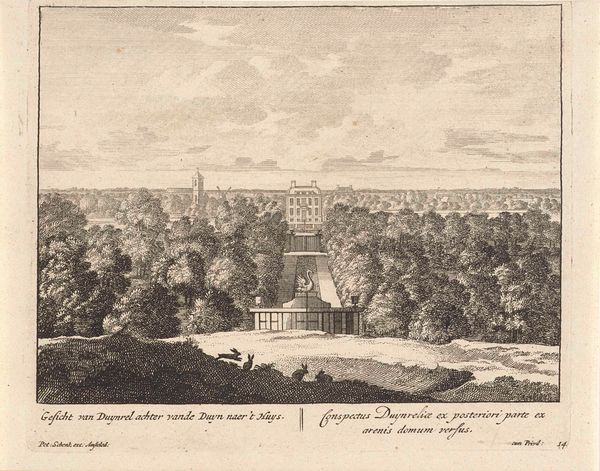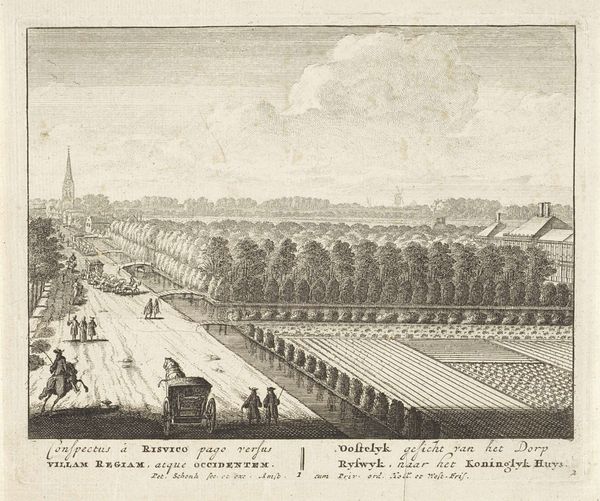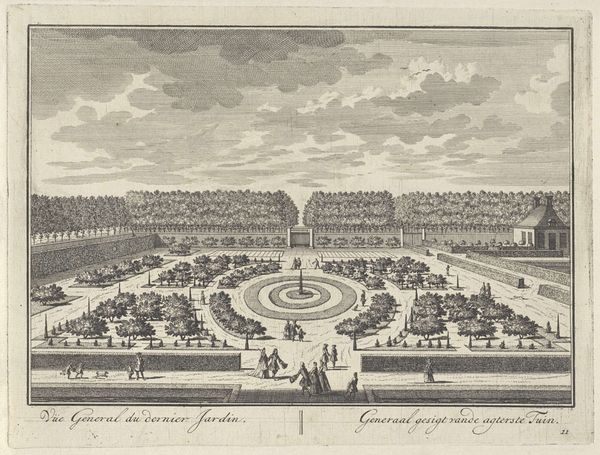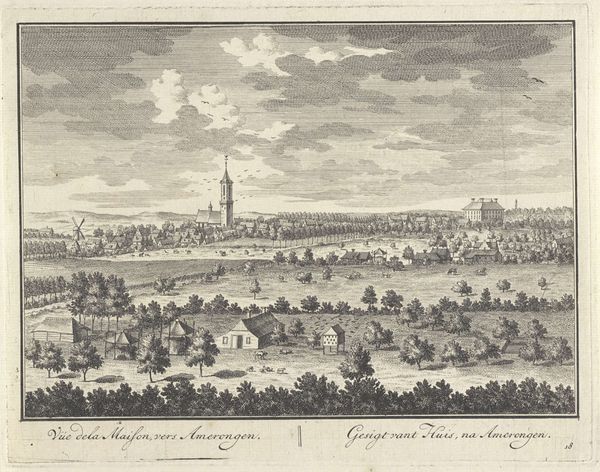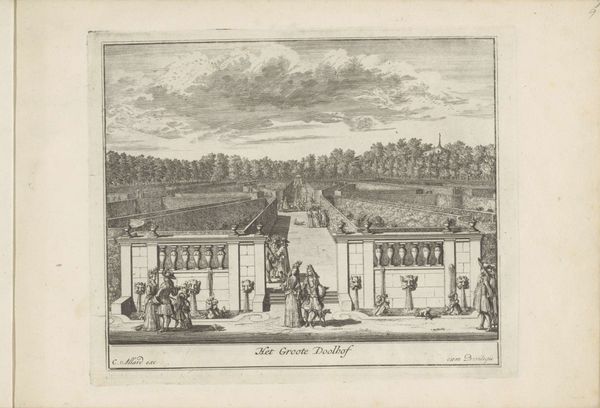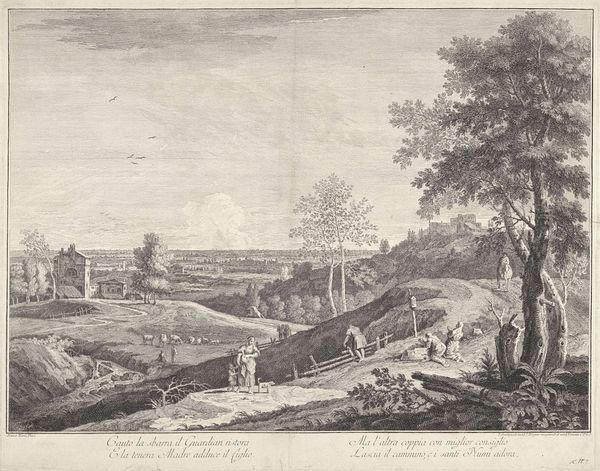
Gezicht op het voorplein en de oprit van buitenplaats Duinrell 1675 - 1711
0:00
0:00
anonymous
Rijksmuseum
print, engraving
#
baroque
#
dutch-golden-age
# print
#
old engraving style
#
landscape
#
cityscape
#
engraving
Dimensions: height 171 mm, width 199 mm
Copyright: Rijks Museum: Open Domain
Editor: This print, titled "Gezicht op het voorplein en de oprit van buitenplaats Duinrell", is from between 1675 and 1711 and is anonymous. The scene depicts an avenue receding into the distance, and the overall tonality strikes me as quite formal and ordered. What structural elements stand out to you? Curator: The rigorous use of perspective immediately commands attention. Notice how the converging lines of the avenue, flanked by meticulously placed trees, create a strong sense of depth, drawing the eye toward the horizon. The print also showcases an intriguing dichotomy: the ordered rows of trees versus the slightly more organic arrangement of figures and carriages in the foreground. This interplay provides a formal balance while hinting at the lively activity of the estate. How does this tension impact your reading of the work? Editor: It almost creates separate planes. The people and carriages appear as if staged within the meticulously planned landscape. Do you think this was a deliberate artistic choice, or simply reflective of the artistic conventions of the time? Curator: Indeed. It reflects an established aesthetic. The artist employed precise lines and shading to delineate each element within the composition. Consider the almost mathematical arrangement of trees lining the avenue; such geometric forms, evident also in the buildings on either side, provide a structured rhythm across the pictorial surface. What does the level of precision tell us about the printmaker's intent, given this focus on such exacting structure? Editor: It implies a desire to capture a specific, idealized version of the place, perhaps emphasizing control and order. I appreciate how looking closely at these formal elements offers new perspectives on this type of landscape art. Curator: Precisely. Examining form gives insight into the broader intent of the work itself.
Comments
No comments
Be the first to comment and join the conversation on the ultimate creative platform.
